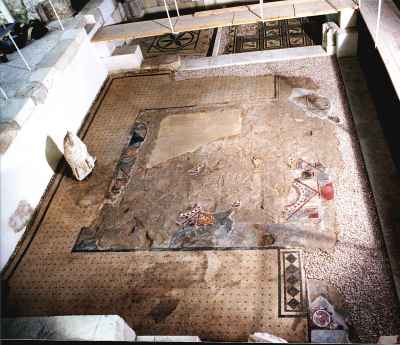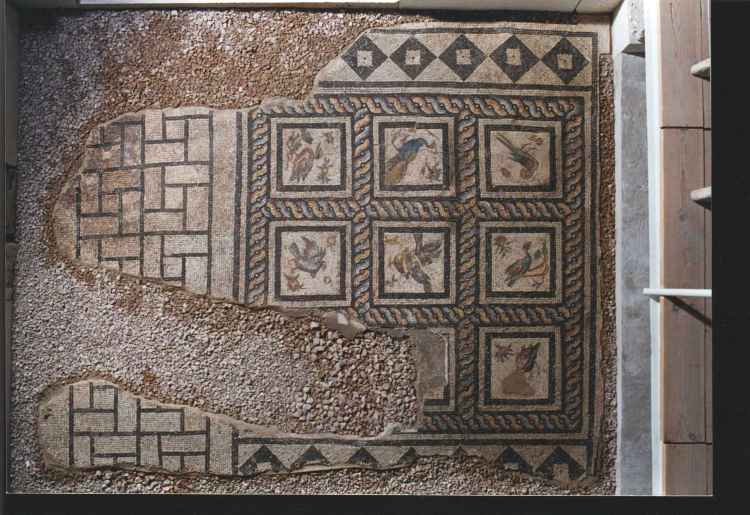Exquisite Roman Mosaics In A Villa in Alexandria to be
opened to visitors soon.
The villa called The Villa of the Birds
Naglaa Habib El Zahlawi
Prime Minister Atef Ebeid, Minister of Culture Farouk Hosni and US officials
will open a display of mosaics that remain in their original setting, a Roman
villa dating back to c.50-300 AD. The conservation and protection of these
mosaics in Kom El Dikka archeological park supports the government plan to
increase opportunities for tourism.
 |
The villa was discovered by the members of the Egyptian-Polish mission during
their forty years of work at Kom El Dikka, Alexandria. In 1998, a group of
competent archaeologists and conservators began the work to preserve and
present the mosaics to the public. The successful completion of the project
resulted from the partnership between the Supreme Council of Archaeology
(SCA), the American Research Center in Egypt (ARCE) and United States Agency
for International Development (USAID). This project is one of numerous
restoration activities in Egypt under the Egyptian Antiquities Project, which
began in 1993. The Director of the mosaic project was Dr.Wojciech Kolataj,
architect, who was assisted by Dr.Grzegorz Majchereck, archaeologist, Ewa
Parandowska, conservator, Essam Mursi, conservator, Ramadan Abdel Rehim, mason
and Mohamed Fawzi laborer.
|

The Roman house known as The Villa of the Birds is named after the exceptional
pavement depicting nine recognizable birds: pigeons, peacock, parrot, quail
and water hen. A mosaic surface of 110 ms created by ancient artisans using
different techniques to adorn floors are actually preserved as fire had
damaged the mosaics in the late third century AD. Intense heat caused the bulge of the mosaics and soot blackened their surface. The roof and
wall collapsed causing the slump and break of the mosaics.
Conservators cleaned the fire-blackened mosaics, repaired breaks caused by
collapsing walls and restored the missing portions and in order to protect
them for the long term from possible water or other damage, an overhead cover
was constructed. An underground aeration system was constructed to mitigate
dampness. An elevated walkway provides a viewing platform for visitors.
Information panels explain the significance of the mosaics.
 During construction of the glass shelter, archaeologists discovered another
mosaic. It depicts a panther using very small cubes of marble, stone and glass
paste. The horns of a defeated prey are still visible near the panther's
forepaws. The prey was purposefully erased from the scene during ancient
repairs.
During construction of the glass shelter, archaeologists discovered another
mosaic. It depicts a panther using very small cubes of marble, stone and glass
paste. The horns of a defeated prey are still visible near the panther's
forepaws. The prey was purposefully erased from the scene during ancient
repairs.
Visitors to Alexandria archaeological park may now view the mosaics in
addition to the imperial bath complex and the Odeon theatre. The villa of the
birds provides an opportunity to see Roman mosaics within a house surrounded
by contemporary monuments.
BACK TO
SCA HOMEPAGE


